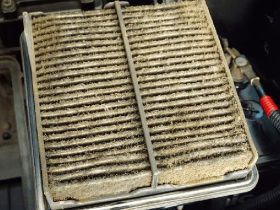The fuel pressure regulator is a component of the engine management that can be found in any type of internal combustion engines. As the name suggests, it is responsible for changing the fuel pressure in different conditions that the engine operates in. In the following rows, we will explore the different signs you usually get from the car that indicates there’s something wrong with the fuel pressure sensors or regulator.
Decrease in acceleration, power and misfires
If the fuel pressure regulator on your car is starting to wear down, the first effects you will notice will be regarding engine performance. Since the pressure is not the right one, this leads to an incorrect fuel and air mix and the physical symptoms can be misfires, a dramatic reduction in power and acceleration and even a spike in fuel consumption. So, if your car is presenting any one of the above mentioned symptoms, you should contact your mechanic straight away as this may lead to some serious issues. There is the possibility of the fuel flow to stop entirely and your wouldn’t want that to happen while you are overtaking or any other dangerous situation.
Fuel leaks
Yet another symptom that could indicate a faulty fuel pressure regulator is represented by leaks of fuel. This usually happens when a diaphragm or any of the seals along the fuel line is damaged and fuel can leak. This is not only a safety hazard as you wouldn’t want gasoline all over the floor where your car is parked but will also lead to severe performance issues. You can easily spot fuel leaks since you will first notice the strong smell of diesel or gasoline in your garage or next to your car. Another way to spot these leaks is physically looking under the car for any stains. In order to determine if it’s fuel or any other type of liquid your car use, cooling liquid or any other type, simply smell it, fuel will be very easy to detect.
Black Smoke Coming out From the Exhaust
If your car leaves a trail of dark, black smoke every type you put your foot on the gas, that might just be another sign of issues with the fuel pressure regulator. This happens when the regulator fails and it delivers too much fuel into the combustion chamber, leading to a lot of residue that is eliminated through the exhaust in the form of black smoke. Yet again, black smoke on the exhaust can be caused by a lot of different malfunctions so the best approach is to get your car checked by a professional. You wouldn’t want an expert in new no deposit slots to take care of your car, right? If all the other signs lead to the conclusion that it’s from the fuel system, then most likely the faulty part is the fuel pressure gauge which should be replaced immediately. In some cars, this is installed separately from the rest of the fuel system so a repair should be quite easy to operate.
Now you know which are the symptoms that a faulty fuel pressure regulator can have and if your car presents any one of these mentioned above, it’s time for a visit to the mechanic.






